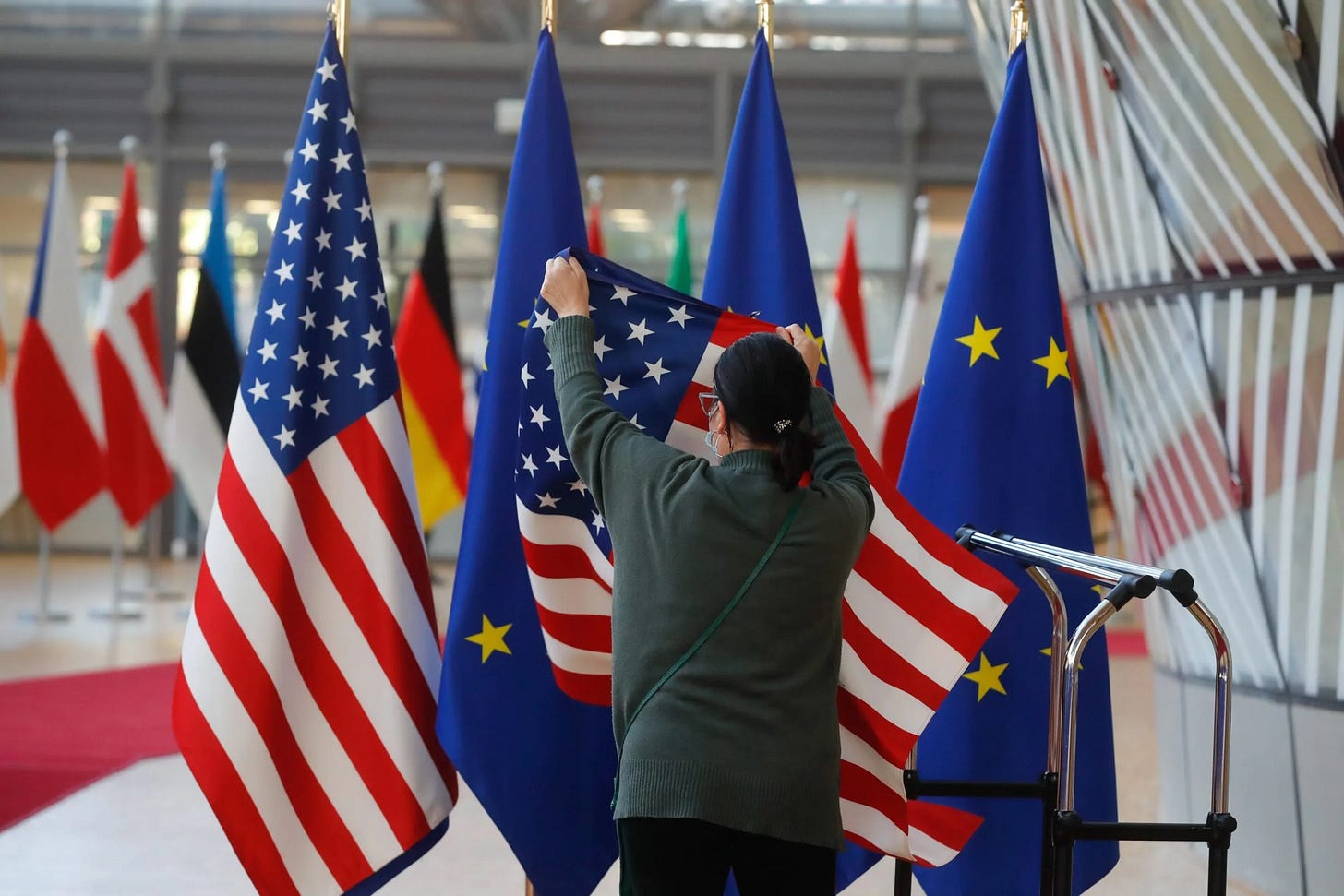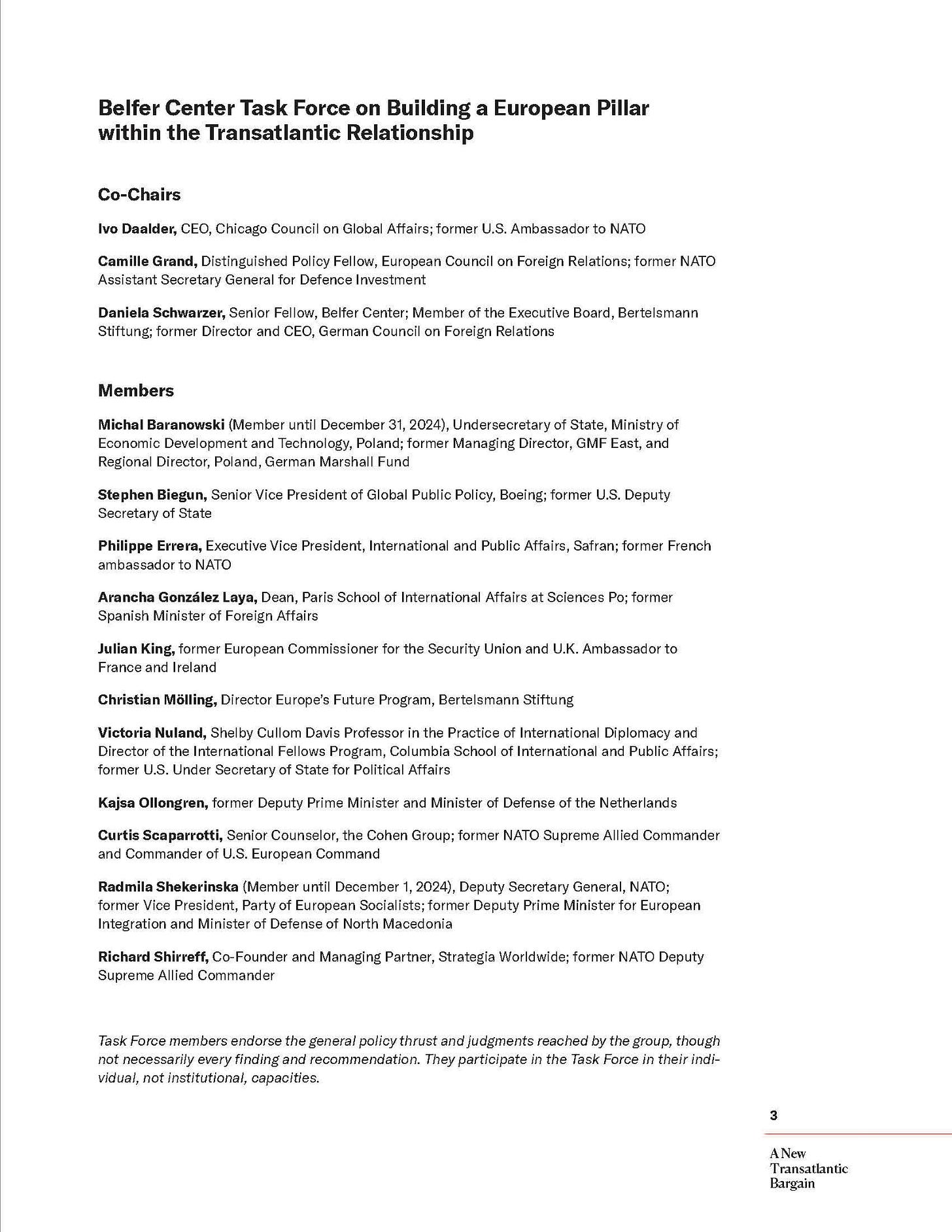We need a new transatlantic bargain
A new task force report argues that the need for a strong European pillar within the transatlantic relationship has never been greater.

While U.S. Vice President JD Vance’s speech at this year’s Munich Security Conference led to shock and indignation, its larger impact was to underscore a sinking realization: The divide between Europe and President Donald Trump’s America is growing ever wider. And we are now faced with a pressing need to reassess the terms of the transatlantic alliance.
European leaders are beginning to realize they may no longer be able to rely on the U.S. for the bloc’s security. Indeed, rumors about the size and extent of U.S. troop withdrawals from Europe were abound in Munich.
But the fact is, Europe has been too dependent on the U.S. for its security — and for too long. It needs to take on much more responsibility for its own defense, not only because of a fundamentally changed security environment but because America’s interest in underwriting the bloc’s security is waning.
Europe’s challenge could not be greater. Russia’s war in Ukraine and its recurring hybrid operations across the continent pose a direct threat to its security. Yet, the bloc doesn’t have the military resources necessary to support Kyiv without significant U.S. aid. Nor does it possess adequate means to ensure the bulk of its own defense — a need that would grow even more acute should Russia win the war.
The imperative confronting the EU is clear: It must invest much more in its defense than it currently plans to, and develop a military that’s able to operate at high readiness levels, with requisite technical, operational and strategic agility to defeat the military threats it now faces. Failure to sufficiently invest in defense and security now will leave the continent exposed to an expansionist Russia as well as other threats — without any iron-clad guarantee of U.S. rescue.
Only if Europe is willing and able to do much more to defend itself will it have any hope of convincing Washington to remain fully committed to transatlantic security. If it is to continue to see enduring value in this historic alliance, Washington needs a true and more equal partnership.
Please read the full article on Politico Europe.
This opinion piece distills the main findings of a larger report published by Belfer Center for Science and International Affairs last week. The report was drafted by a high level task force, that I co-chaired with Daniela Schwarzer of the Bertelsmann foundation and Camille Grand of the European Council on Foreign Relations. The report was issued at the Munich Security Conference, and has already received a lot of attention. The task force members included high-level former officials from both sides of the Atlantic, as well as two members who have since become Deputy Secretary General of NATO and Deputy Minister for Economic Development and Technology in Poland.
Here is the full list:










Hmm.... The EU already has considerable forces, right now, today. Here's a quick summary of EU forces generated by ChatGPT. Corrections welcomed as needed.
Combined Totals for EU Nations:
Main Battle Tanks: Approximately 2,416
Fighter Aircraft: Approximately 1,190
Active-Duty Personnel: Approximately 996,000
What good are these forces doing parked in their home countries? There is only one military threat to the EU, and everyone knows where it is. What's stopping the EU from parking most of these forces in western Ukraine or eastern Poland?
What's stopping the EU from positioning their forces behind the Ukrainian front lines to prevent any possible Russian breakthrough?
What are they afraid of? The Russians can only barely handle the Ukrainians alone, what chance would they have against the Ukrainians plus the EU forces?
There seems to be wide agreement the EU needs to strengthen it's military assets. But what may also be happening is that this need will be used as an excuse for why the EU can't engage now in some manner with the forces it already has.
Main Battle Tanks: Approximately 2,416
Fighter Aircraft: Approximately 1,190
Active-Duty Personnel: Approximately 996,000